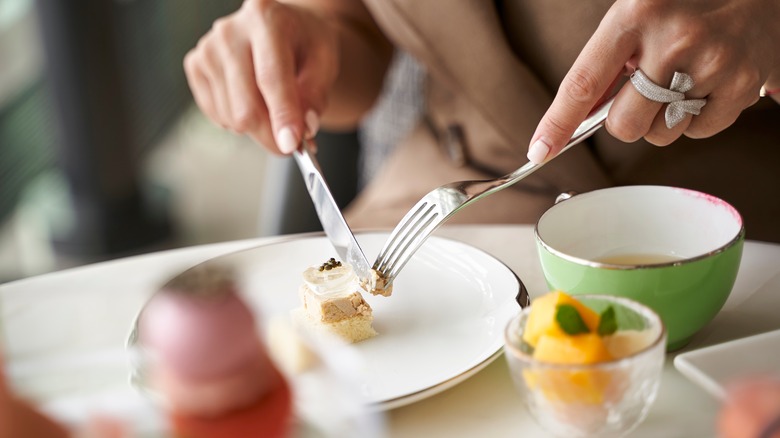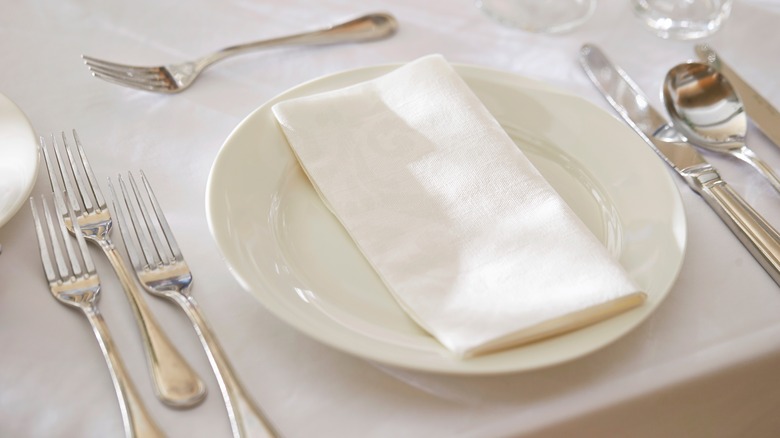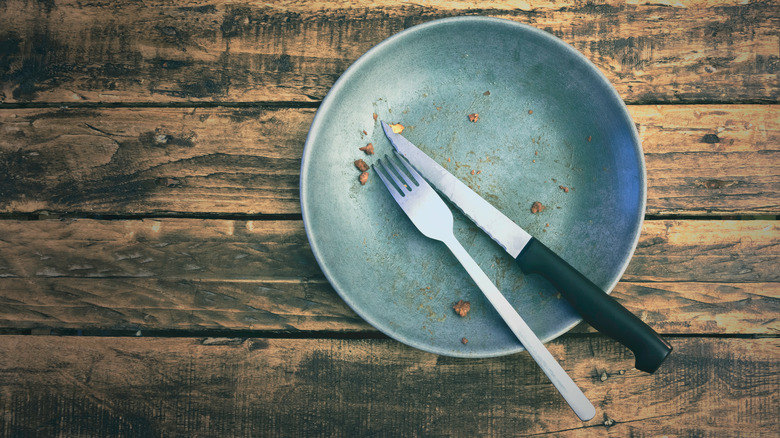The Knife And Fork Rule To Keep In Mind When Dining In Europe
If you're new to European travel, it can be a bit intimidating at the jump. If you're visiting multiple countries around Europe, you could meet people who speak French, German, Italian, Dutch, Spanish, and Flemish, all in a matter of days. It can be head-spinning if you're not a polyglot or a seasoned traveler. But even if you can't perfect every language, you can still ingratiate yourself with the locals.
One of the best things you can do before traveling to Europe is to familiarize yourself with local customs, especially when dining out. Perhaps you have dreams of dining in bistros in Paris, or you're staying at an Agriturismo in Italy. Whether you'll be encountering the waitstaff at a restaurant or a host at a bed and breakfast, having proper manners when dining in Europe can make you a cut above the rest of the American tourists visiting the continent.
In France, you'll want to cut your food with your fork in the left hand and knife in the right hand, but you'll keep your fork in the left and take your bites left-handed.
Hold utensils while you eat
In the U.S. most formal table settings are set in continental style, where the fork will be on the left side and the knife will be on the right-hand side. For those who are right-hand dominant, most people hold their food with their fork in their left hand and cut with their knife in their right hand. Then they set the knife down and shift the fork over to the right hand to pick the food up and take a bite. In Europe, this would be considered improper, particularly in France, where dining etiquette is highly prized.
In France, the practice of keeping your fork in the left hand is the same for both right-hand dominant and left-hand dominant folks (and is often easier for left-handed people). In Europe, you keep your utensils in your hands the entire time you're eating, and it's important that they're visible and not resting in your lap.
It should also be noted that when dealing with a soup spoon, it's most proper to eat soup with your dominant hand. Regardless of where it's placed on the table, use your dominant hand for consuming any kind of soup, stew, or, soft dessert.
When you finish eating
There's nothing worse than someone taking your plate when you're still eating, so be sure to signal your host or waitstaff that you're finished.
When you finish your meal, you can show that you're done by setting your fork and knife down. You'll want to set them parallel on the right side of your plate. This lets your host or waitstaff in a restaurant know that you've finished your meal.
While no one is going to throw you out of a restaurant if you don't remember the proper fork and knife etiquette, it'll be appreciated. Many Europeans are gracious with American travelers who don't know the customs, but you can score some points by being in the know and following local customs. European countries are highly proud of their culinary history and offerings, so showing respect when they're sharing their food with you is the right thing to do. It's not only wise to be polite, but also to be a gracious traveler. When traveling abroad, the more you can adhere to local customs, the more welcomed and appreciated you'll be. And the more likely your new European friends will want to have you back to visit again.



